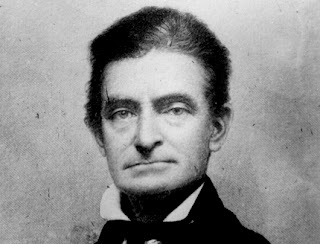“Bleeding Kansas” is the expression used to describe the
violence that occurred in the territory of Kansas in 1854. It started with the Kansas-Nebraska Act which
replaced the Missouri Compromise in determining whether a territory would be
pro- or anti-slave territory. The
Kansas-Nebraska Act allowed the people to choose (“popular sovereignty”) and
the Missouri Compromise used latitude to set the border between free and slave
territory. Because people in Kansas could now choose free or slave territory,
pro-slavery and anti-slavery supporters rushed to Kansas to try to sway the
result. Violence broke out between the
factions and Kansas was in turmoil.
In May of 1856, Senator Charles Sumner of Massachusetts was
assaulted by congressman Preston Brooks of South Carolina because Sumner gave a
speech “The Crime Against Kansas,” which denounced slavery. Sumner mainly
directed his speech against Senator Andrew Butler of South Carolina. Preston Brooks, the cousin of Andrew Butler,
assaulted Sumner with a cane by hitting him repeatedly, while sitting at his
desk in the Senate chamber. Sumner did not return to the Senate for three
years. Northerners were outraged and Brooks was considered a hero in the South.
This incident is significant because it added to the escalating hostility
between the North and South.
















